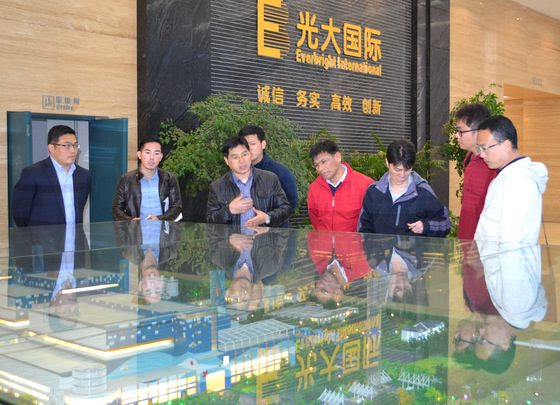 CIMB-GK analyst Roy Chen, Maybank Kim Eng analyst Wei Bin, Shares Investment reporter Louis Lee and NextInsight were in Shandong to check out China Everbright Group's wastewater treatment facilities as well as its waste-to-emergy plant last week.
CIMB-GK analyst Roy Chen, Maybank Kim Eng analyst Wei Bin, Shares Investment reporter Louis Lee and NextInsight were in Shandong to check out China Everbright Group's wastewater treatment facilities as well as its waste-to-emergy plant last week.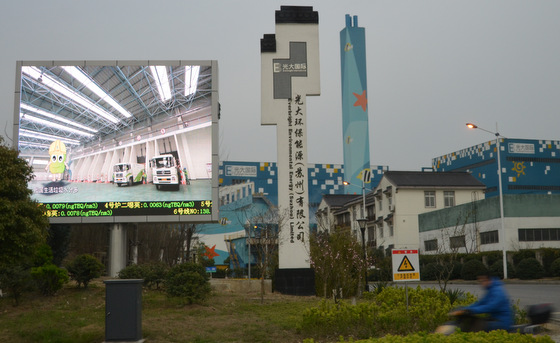 China Everbright Group's waste to energy plant (pictured above, a China Everbright International subsidiary that is not under the Singapore listed entity) is a showcase of the parent Group's technological capability
China Everbright Group's waste to energy plant (pictured above, a China Everbright International subsidiary that is not under the Singapore listed entity) is a showcase of the parent Group's technological capability
Photos by Sim Kih
AT CHINA EVERBRIGHT WATER'S facility in the Shandong provincial capital of Jinan, CEO Wang Tianyi shared the Group's expansion plans with analysts and media from Singapore.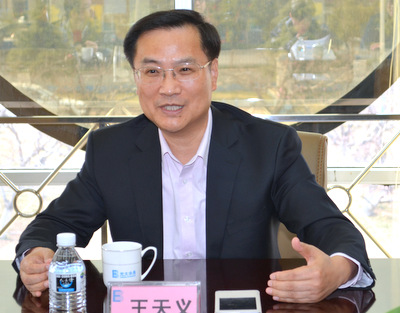 'Public-Private Partnership (PPP) project financing schemes incorporate the principle of addressing operational efficiency, fair distribution of risk and maximisation of public benefit to the different stakeholders,' said China Everbright Water CEO Wang Tianyi.
'Public-Private Partnership (PPP) project financing schemes incorporate the principle of addressing operational efficiency, fair distribution of risk and maximisation of public benefit to the different stakeholders,' said China Everbright Water CEO Wang Tianyi.
"Shandong is a huge province with a population 100 million. We intend to further develop our network of assets in this province," said Dr Wang.
Expansion is important
The government’s policy to raise national standards of wastewater discharge is changing the industry landscape.
Many small players are struggling to meet the increasingly stiff requirements, which translate into high capital expenditure and higher cost of operations.
Those with cheap facilties and low operating cost will not be able to comply with the new discharge standards, and will have difficulty surviving because they will not break even if they upgrade their facilities.
This development has created opportunities for the Group to acquire smaller wastewater treatment players at bargain prices.
The stock price of SIIC Environment, the Singapore-listed subsidiary of Shanghai Industrial Holdings, has leapt 10% since last Monday when it announced an agreement to pay Rmb 1.5 billion to acquire a 92% interest in Chinese developer Fudan Water, including the defeasance of debt.
Founded by the famed Fudan University in Shanghai, Fudan Water has a planned capacity of over a million tons a day, with about 10 wastewater treatment projects in Shanghai, Jiangsu, Zhejiang and Guangdong.
Dr Wang expects the water treatment industry to heat up this year with a significant number of M&As of players with capacity of 300,000 to 500,000 cubic meters a day.
In comparison, the Group's total wastewater treatment capacity is currently 2.4 million cubic meters a day, with another 942,500 cubic meters under construction or in preparation for operation.
The Group has 32 wastewater treatment projects, 4 reusable water projects and 2 heat pump projects after merging with Hankore.
Dr Wang is expecting an industry consolidation characterised by the dominance of large players.
He is also expecting the government to announce a whitelist of the companies that it intends to support.
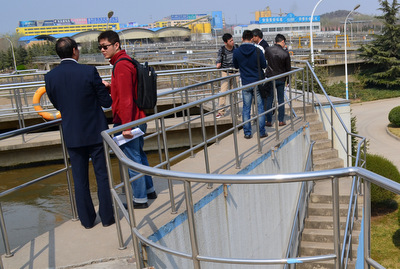 China Everbright Water's Jinan Licheng reusable water project is a BOO investment with daily wastewater treatment capacity of 42,000 cubic meters.
China Everbright Water's Jinan Licheng reusable water project is a BOO investment with daily wastewater treatment capacity of 42,000 cubic meters.
Hankore's plant was of sizable capacity while the China Everbright facilities impressed as being technically more advanced.
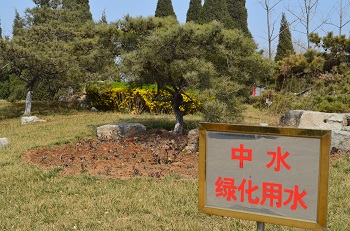 Non-potable reclaimed water is used to irrigate gardens at the Jinan Licheng Reusable Water Facility.
Non-potable reclaimed water is used to irrigate gardens at the Jinan Licheng Reusable Water Facility.
In 2013 and 2014, China Everbright's Jinan plants won accolades for having the highest standards among treatment plants in 36 key PRC cities appraised by the international water fraternity.
We also visited a plant owned by China Everbright Water that transformed wastewater into non-potable reclaimed water as well as a waste-to-energy plant owned by China Everbright International.
Jinan Licheng Reusable Water Facility
The walkways of China Everbright Water's Jinan Licheng Reusable Water Facility is the first plant I have visited that is littered with petals of spring blooms.
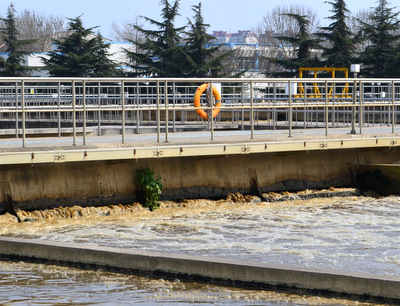 At China Everbright Water's Jinan Licheng water recycling project, grade 1A wastewater discharge (above) is recycled into non-potable reclaimed water.
At China Everbright Water's Jinan Licheng water recycling project, grade 1A wastewater discharge (above) is recycled into non-potable reclaimed water.
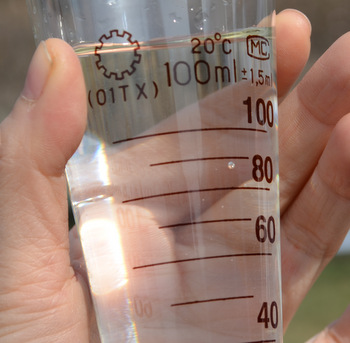
Post-treatment, non-potable reclaimed water is of a clear transparent quality and supplied to Huaneng Jinan Huangtai Power as industrial cooling water.
It uses the post-treatment non-potable reclaimed water to irrigate these plants as a test of water safety!
Every day, the workers at this facility eat fresh vegetables harvested from the facility's own gardens.
Numerous flowering almond trees provide staff with fresh nuts.
An ability to reclaim wastewater into water suitable for agricultural irrigation is a prelude to the ability for potable water supply.
"We are looking into the provision of fresh water piped to households," said Dr Wang.
"We will try to foray into cities that will provide economies of scale for such projects.
"However, such projects are socially more sensitive as tariffs for fresh water supply is borne by householders, unlike tariffs for wastewater treatment which are borne by the authorities."
Wuzhong Chengnan Wastewater Treatment Facility
Works are underway for capacity expansion and facility upgrade at Hankore projects to raise return on investment to be on par with projects inherited from China Everbright International.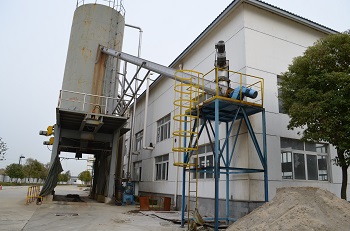 Water is removed from wastewater in this building at the Wuzhong Chengnan wastewater treatment facility.The Hankore plant we visited was its Wuzhong Chengnan waste water treatment project in Suzhou.
Water is removed from wastewater in this building at the Wuzhong Chengnan wastewater treatment facility.The Hankore plant we visited was its Wuzhong Chengnan waste water treatment project in Suzhou.
This is a sizable project with total project capital expenditure of between Rmb 700 million to Rmb 800 million for a daily capacity of 150,000 cubic meters.
Phase 1, which commenced operations in January 2009, was completed with capital expenditure of Rmb 558 million.
Phase 2 has been under construction since 15 October last year.
Capacity expansion will be completed in May with commercial operation slated for July.
The capex for phase 2 is Rmb 180 million, mainly for the installation of equipment like pumps and filters for capacity to treat 75,000 cubic meters of wastewater a day.
The entire plant was being upgraded: Concrete covers were built over wastewater wells to prevent the odour from polluting the environment, especially important if a plant was within walking distance of residential precincts.
The plant's wastewater discharge standard was also being upgraded from 1B to 1A. Upgrading works will be completed in November 2015.
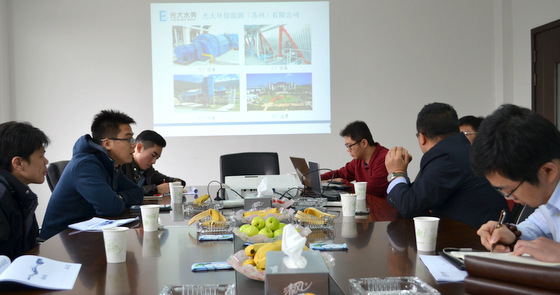 The analysts, NextInsight and Shares Investment had Q&A sessions with the manager of each plant visited.
The analysts, NextInsight and Shares Investment had Q&A sessions with the manager of each plant visited.







